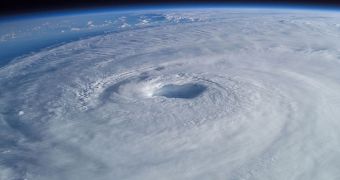With the current oil spill in the Gulf of Mexico, a great deal of attention is now being given to preventing instances such as this from happening. But researchers say that disasters of this magnitude are not only possible, but very likely, especially during the hurricane season. In a new study, a team of investigators shows how massive storms can generate underwater waves that are so massive they can dislodge and rupture pipelines running underneath the surface. Given that about 31,000 miles (50,000 kilometers) of pipes run under the Gulf of Mexico alone, this could be a serious threat, the team says.
Things are made even worse by the fact that the 2010 hurricane season has already started on June 1. A large storm passing through the Gulf could have a double whammy effect on the area, destroying both pipelines, and helping to spread the already existing oil slick off the south coast of Louisiana. There is no way to predict just how large this year's hurricanes will be, or whether they will pass through the site of the now-sunk Deepwater Horizon drilling rig. But, even if this worst-case scenario is averted, there is still a high chance of various oil pipes suffering extensive damage, US officials argue.
Their work is unfortunately deeply founded in hard statistics. Back in 2004, Hurricane Ivan damaged no less than 168 pipelines, according to reports submitted to federal authorities. Rita destroyed about 243 pipes in 2005, whereas Katrina was by far the most damaging, at 299 pipelines damaged. These data were provided by expert Bill Teague, who is based at the US Naval Research Laboratory, Stennis Space Center, Mississippi, OurAmazingPlanet reports. He peered through old statistics compiled by the US Minerals Management Service to retrieve the information. The scientist explains that the number one damage was pipe lift and separation, followed closely by “unknown damage.” Dents, kinks, and slight pipe displacements are also common side-effects of hurricanes passing by.
In a new paper published in the June 10 issue of the esteemed scientific journal Geophysical Research Letters, the expert says that the new statistic is not necessarily meant to predict when and where the next spill happens. Rather, it's destined to serve as a tool for architects and engineers, to help them design and construct pipelines that are more efficient at withstanding waves, and also less likely to be ripped from the ocean floor. “It doesn't take a Category 4 storm to do this,” Teague concludes.

 14 DAY TRIAL //
14 DAY TRIAL //